Garden Fertilizer Explained: Beginners guide to plant food
 Lee Burkhill: Award Winning Designer & BBC 1's Garden Rescue Presenters Official Blog
Lee Burkhill: Award Winning Designer & BBC 1's Garden Rescue Presenters Official Blog

Plant food and fertilizer can be somewhat confusing if you're new to gardening or even an expert gardener. With the multiple different types of fertilizer, from shop-bought to homemade plant foods, it can be tricky working out what to feed which plant, when to feed and by how much.
Often, so many gardeners just feed plants consistently, adding far more food than the plant ever needs, wasting money and resources in the garden. Did you know that overfeeding plants can harm their growth and vegetable yields?
Let's dig deeper into plant feed and fertilizer to work out what, if anything, your plants need and when to provide it.
This page contains affiliate links for products I use and love. If you take action (i.e. subscribe, make a purchase) after clicking a link, I may earn some gardening commission which helps me keep the Garden Ninja Blog free for all.
Surely all garden fertilizers and plant foods are basically the same thing, you may ask? Well, it's not that simple.
When it comes to garden fertilizers and plant feeds, there are various options, all offering different nutritional values, release speeds, application methods and manufacturing techniques.
Then there's the price point from relatively cheap homemade plant foods to expensive synthetic manufactured fertilizers that can target specific nutritional requirements of your plants. The two main types of fertilizer are:
So, let's take a closer look at the main types of fertilizer available for you to use in your gardens to feed your plants.
This type of fertilizer comes from natural sources, such as animal manure, compost, and bone meal. Organic fertilizers release nutrients slowly and improve soil structure, water-holding capacity, and aeration.
Organic plant fertilizers are derived from natural, organic sources such as plant or animal materials.
These organic fertilizers are typically used to provide essential nutrients to plants and improve soil fertility in a sustainable and environmentally friendly manner.
Here are some common types of organic plant fertilizers:
Compost is one of the most widely used organic fertilizers and is super easy to make at home using old plant or lawn waste. Kitchen scraps are usually used as part of your compost look and can cut down on waste sent to landfill.
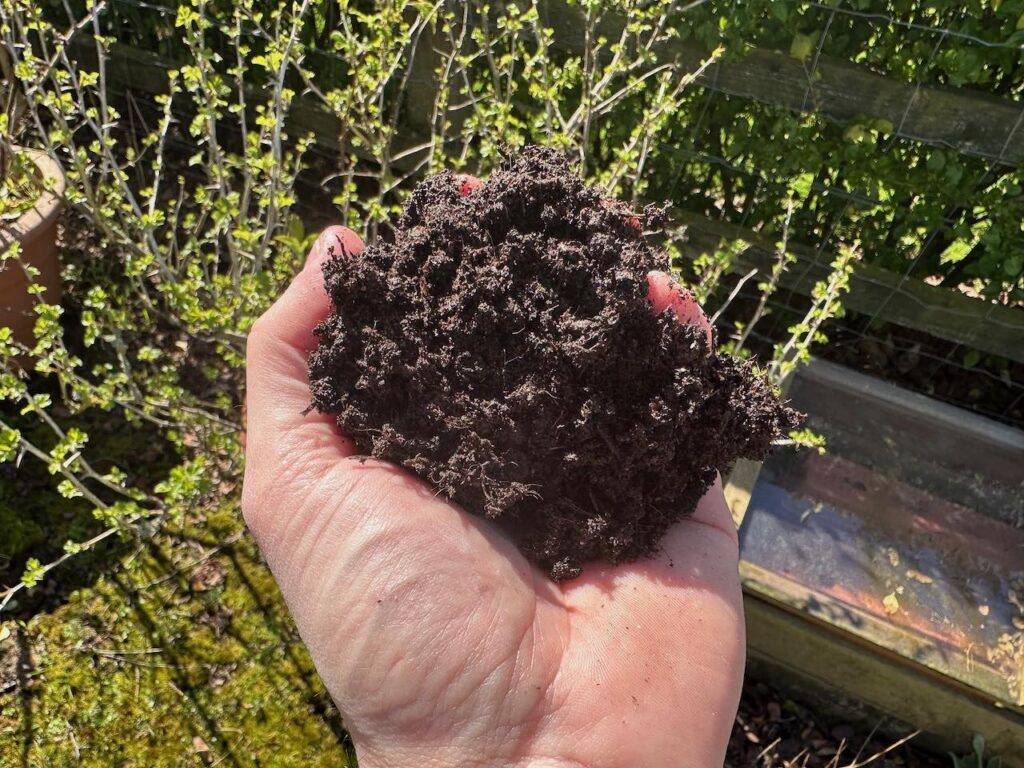
Compost is created through the decomposition of organic matter, such as food waste, garden trimmings, and other plant materials, by microorganisms. Compost is rich in organic matter, which provides a wide range of nutrients for plant growth, improves soil structure, enhances water retention, and promotes beneficial microbial activity in the soil.
You may hear compost being called 'black gold' by gardeners as it's probably the best around plant food and soil improver. It's also the cheapest.
Animal manure, such as cow, horse, poultry, or sheep, is another common organic fertilizer. Collecting the poo of these animals and recycling it in the garden. It is a good source of nutrients, including nitrogen, phosphorus, and potassium, as well as organic matter.
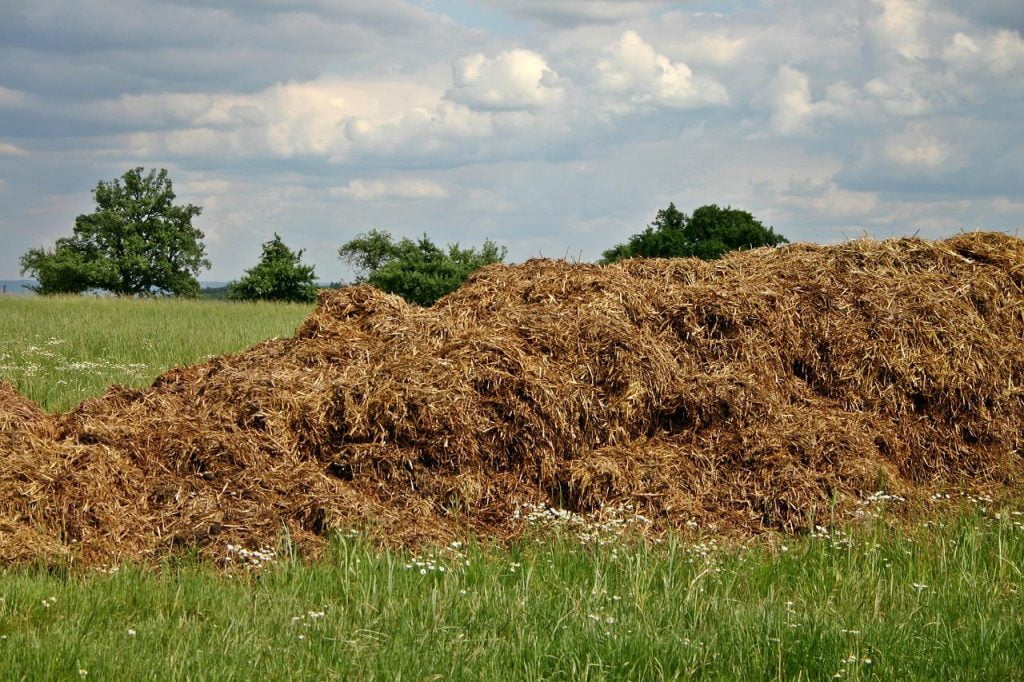
However, manure should be properly aged before use in the garden or composted before application. This is to avoid potential issues with ammonia, burning of plants roots, pathogens, odour, and weed seeds from damaging your garden. Always leave manure for 6 months until it only has an earthy smell left before use.
Seaweed or kelp is a type of marine algae that can be used as an organic fertilizer. It is rich in a wide range of nutrients, including nitrogen, phosphorus, potassium, and trace minerals. Seaweed or kelp can be used as a foliar spray or incorporated into the soil to improve plant growth and overall soil fertility.
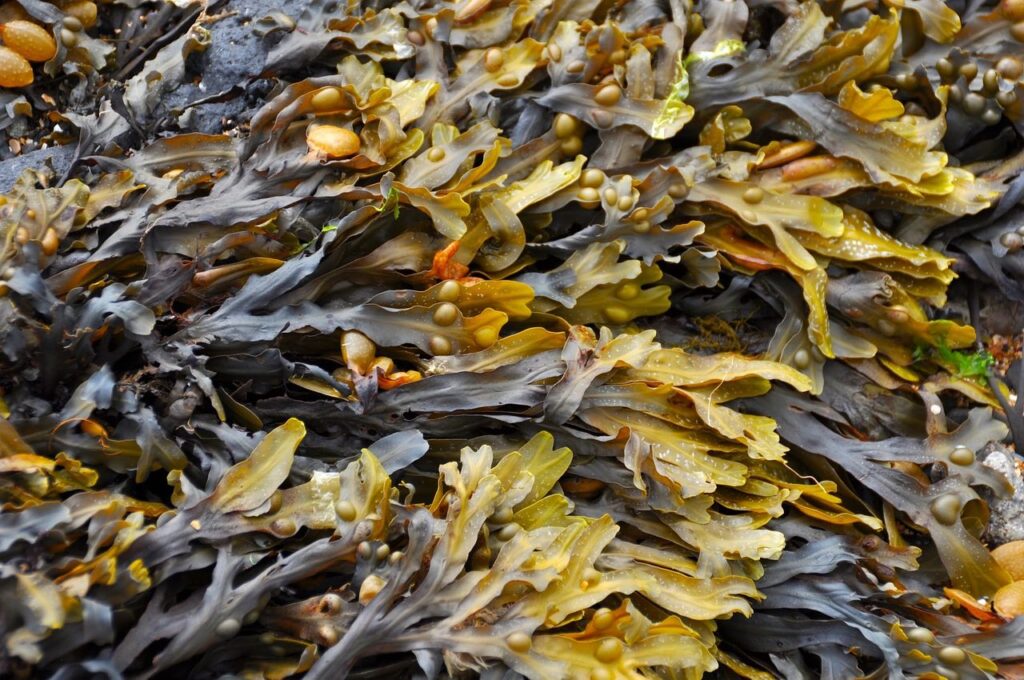
Seaweed organic plant food is often used on lawns as it can be easily applied as a liquid feed, ensuring even coverage on lawn surfaces. It contains an excellent mix of balanced nutrients for grass, making it a fantastic lawn fertilizer.
Green manure refers to the practice of growing cover crops, such as legumes, clover, or alfalfa, and then ploughing or tilling them into the soil as a source of organic matter and nutrients. Green manure helps improve soil structure, add organic matter, and release nutrients as the cover crop decomposes.
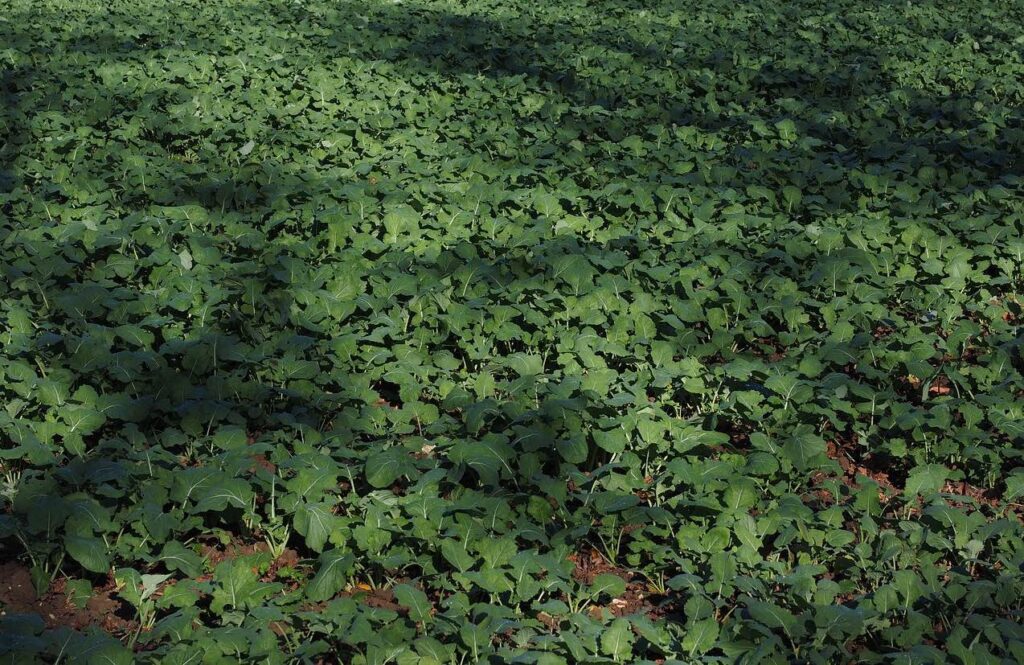
It works by using these short-lived crops to capture nitrogen from the environment and then fix it in the soil. Some legumes will do this via nodules on their roots. When the green manure is ploughed back into the soil, these nutrients are then released for other plants to uptake.
Usually, green manure is used on allotments or vegetable gardens and is sown in between growing seasons like Autumn and Spring to help add nutrients back to the vegetable or raised beds.
You apply green manure by sowing seeds which you then hoe back into the ground before they flower and set seed—basically, recycling the nutrients they have absorbed from the atmosphere, not the soil.
Did you know that you can take my course and learn how to become a Garden Ninja yourself? Click here for details
Organic fertilizers are typically slower to release nutrients compared to synthetic or man-made fertilizers. This means less of a sudden boost in food, which then stops suddenly. Organic feeds provide long-term benefits to soil health, plant growth, and environmental sustainability, given the fact they are recycling existing materials. However, the key benefit to organic over inorganic plant foods is that they are also fantastic at improving soil structure.
Organic fertilizers improve soil structure by opening up the crumb or texture of the soil. In the instance of clay soil, they add more air to the structure of the soil, aiding with reducing water logging. They also help retain moisture and nutrients in sandy soil. So organic plant foods not only feed the plant but improve your soil!
Did you know that you can take my course and learn how to become a Garden Ninja yourself? Click here for details
This type of fertilizer is manufactured and often contains synthetic chemicals or compounds. Inorganic fertilizers release nutrients quickly and are often used to correct nutrient deficiencies in the soil. These are the main types of shop-bought fertilizers often seen in boxes or bottles lined up in garden centres.
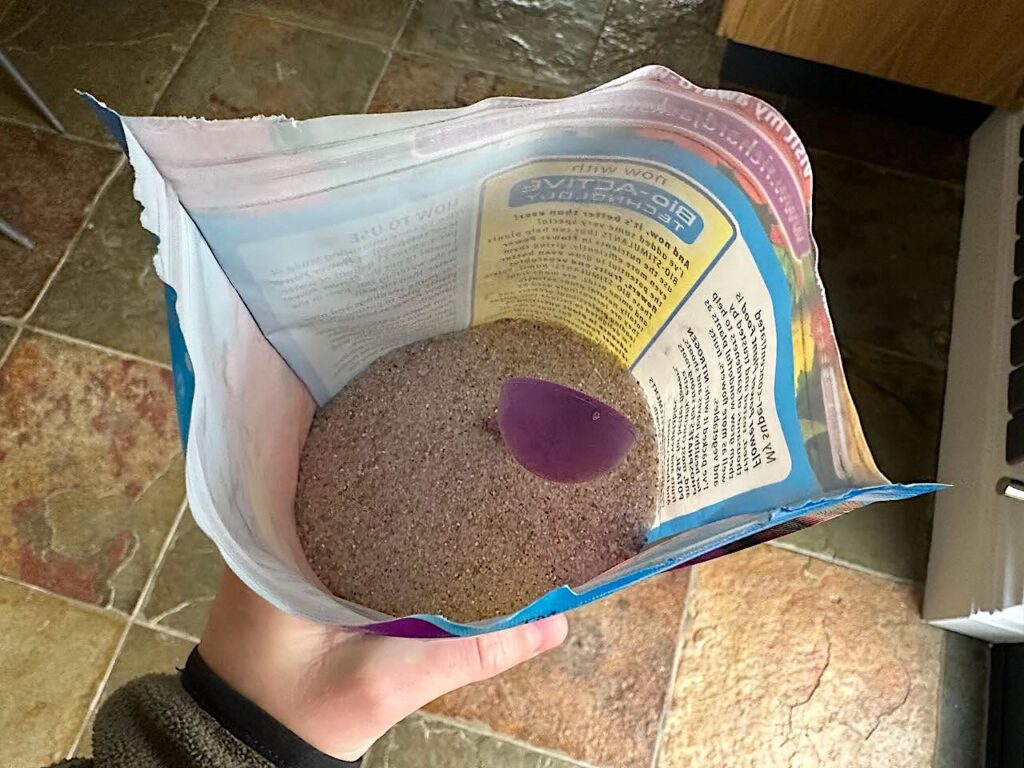
These man-made plant foods deliver nutrition in varying amounts depending on the formulation.
The biggest drawbacks of these inorganic fertilizers are:
These are fertilizers that release nutrients over a longer period of time. They are often used for container plants and can last for several months. These are a mix of organic, such as fish, blood and bone and then synthetic man-made slow-release fertilizers.
This is a composition plant feed of nitrogen, phosphorous and potassium from deceased animals. It's a byproduct of the livestock industry of cattle and fishing. Bone meal is made from crushed and powdered animal bones, typically from livestock or fish. It is a good source of phosphorus, which is essential for root development, flowering, and fruiting in plants.
Bone meal also contains calcium and trace minerals. Blood is a good nitrogen source, which is important for leaf growth and overall plant vigour. Blood meal is also high in protein and contains trace minerals.
These are granular fertilizers coated with a thin layer of polymer that controls the release of nutrients. The polymer coating gradually breaks down over time, releasing the enclosed nutrients into the soil. The release rate can be controlled by the thickness of the coating, making it possible to customize the fertilizer release to match the plant's nutrient requirements.
SCU fertilizers are coated with a layer of sulfur that acts as a slow-release barrier. The sulfur coating gradually oxidizes in the soil, releasing the enclosed urea nitrogen as a slow-release nitrogen source. SCU fertilizers are commonly used for lawns, golf courses, and other turfgrass applications.
These are fertilizers that come in liquid form and are applied to the soil or foliage as a spray or watered in. These feeds are seeped and mixed with water to create the feed or manufactured in liquid format.
Liquid feeds make measuring fertilizers far more straightforward than granular feeds, as you dilute them based on how much water your watering can holds. For example, if you have a liquid feed that needs 1 part fertilizer to 9 parts water and you have a 10lt watering can, you would add 100ml of liquid feed to 900ml of water.
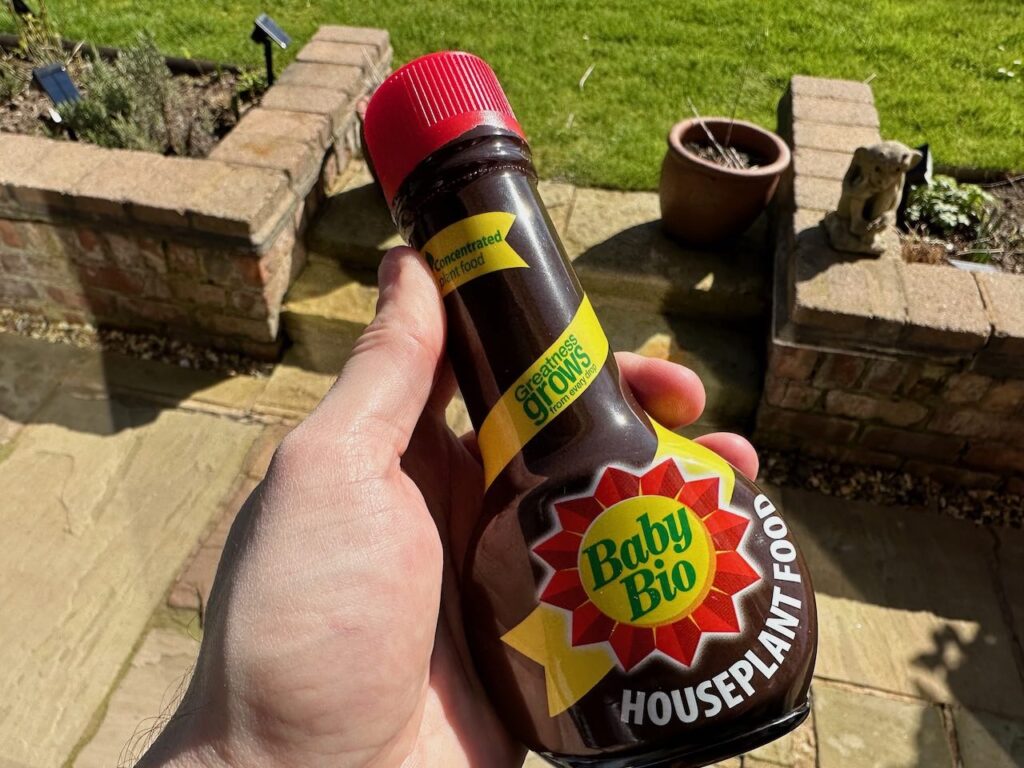
The benefit of liquid plant feed is that plants quickly absorb them and are often used to provide a quick nutrient boost. So if your plants are sickly or producing fruit and need a fast boost of nutrients, these are the best.
Probably the best-known liquid plant feed is either tomato food, which is super high in potassium for fruits, or Baby Bio, the liquid plant feed for house plants.
The other liquid feed is Comfrey tea, which has an insane amount of potassium, far more than tomato food. It's an excellent feed for fruit, vegetables and poor soil. Best of all, you can make it yourself at home each year for free!
The main drawback with these is that they are short-lived (lasting at most 2 weeks before needing to be reapplied) and can again leach out of the soil quickly, targeting plants you don't want to feed.
These are fertilizers that come in small granules that are applied to the soil. They release nutrients slowly over time and are often used for lawns and large garden areas where this type of fertilizer can be scattered quickly, saving time.
These granular plant foods are often labelled as 'multi-purpose plant food' as they contain a balance of nitrogen, phosphorous and potassium. They can be man-made or organic.
One of the best granular feeds comes in pellet form and is chicken manure which has been processed as pellets. This organic feed can be scattered over flower beds or vegetable patches and provides a slow-release high, nutrient feed for plants. As it's organic, it breaks down and has the lowest impact in terms of manufacturing compared to the big synthetic fertilizers as it recycles chicken waste.
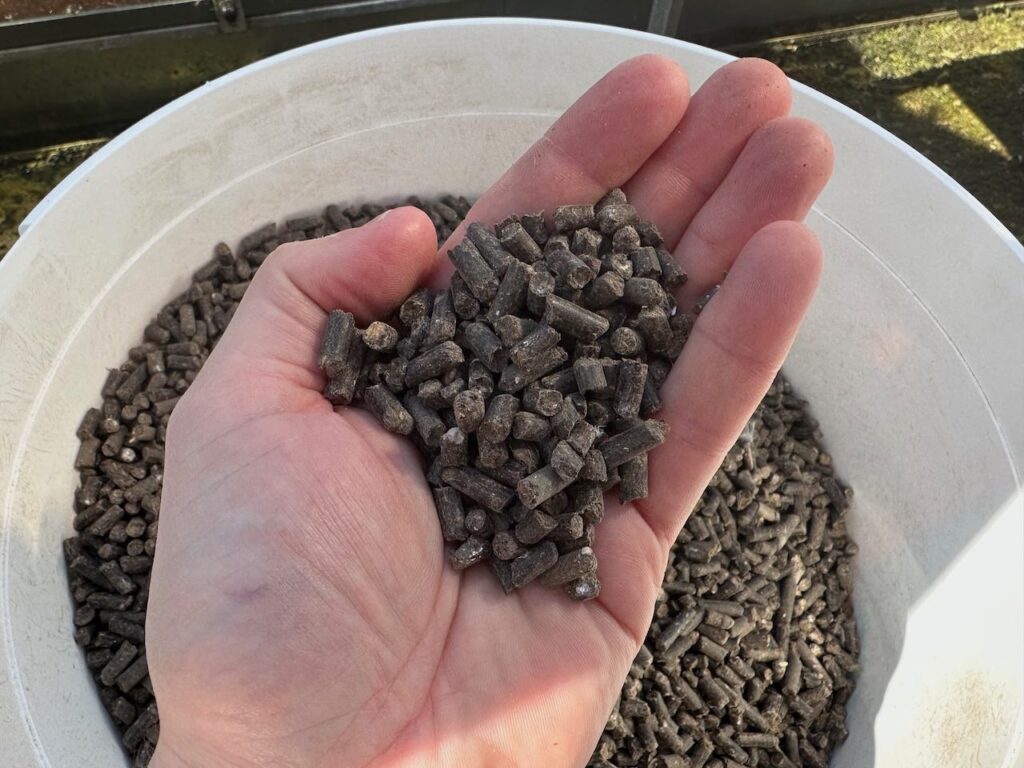
These are fertilizers that are applied directly to the leaves of plants. They are quickly absorbed by the plant and often used to correct nutrient deficiencies or provide a quick nutrient boost. Foliar feeds are absorbed by the stomata (breathing cells) of the plant leaves so the plant often uses foliar feeds far faster than a root feed.
Foliar feeds are mainly used to treat deficiencies such as chlorosis of the leaf. These foliar feeds can be applied quickly to help reverse the plant ailment.
Foliar feeds also don't leach out onto other plants, so they are considered a targetted fertiliser.
It's important to choose a fertilizer that meets the specific needs of your plants and soil. You can test your soil to determine which nutrients are lacking and select a fertilizer that provides those nutrients. Additionally, it's essential to follow the application instructions on the fertilizer package to avoid over-fertilizing, which can damage plants and harm the environment.

Fish emulsion is a liquid organic fertilizer made from fish waste or fish remains. It is a good source of nitrogen, phosphorus, and potassium, as well as trace minerals. Fish emulsion is typically used as a foliar spray or soil drench and is readily absorbed by plants.
NPK stands for Nitrogen (N), Phosphorus (P), and Potassium (K), which are the three most important nutrients required by plants to grow.
The NPK ratio on plant food is a way of indicating the relative amounts of these three nutrients that are present in the fertilizer. For example, a fertilizer with an NPK ratio of 10-10-10 contains 10% nitrogen, 10% phosphorus, and 10% potassium by weight.
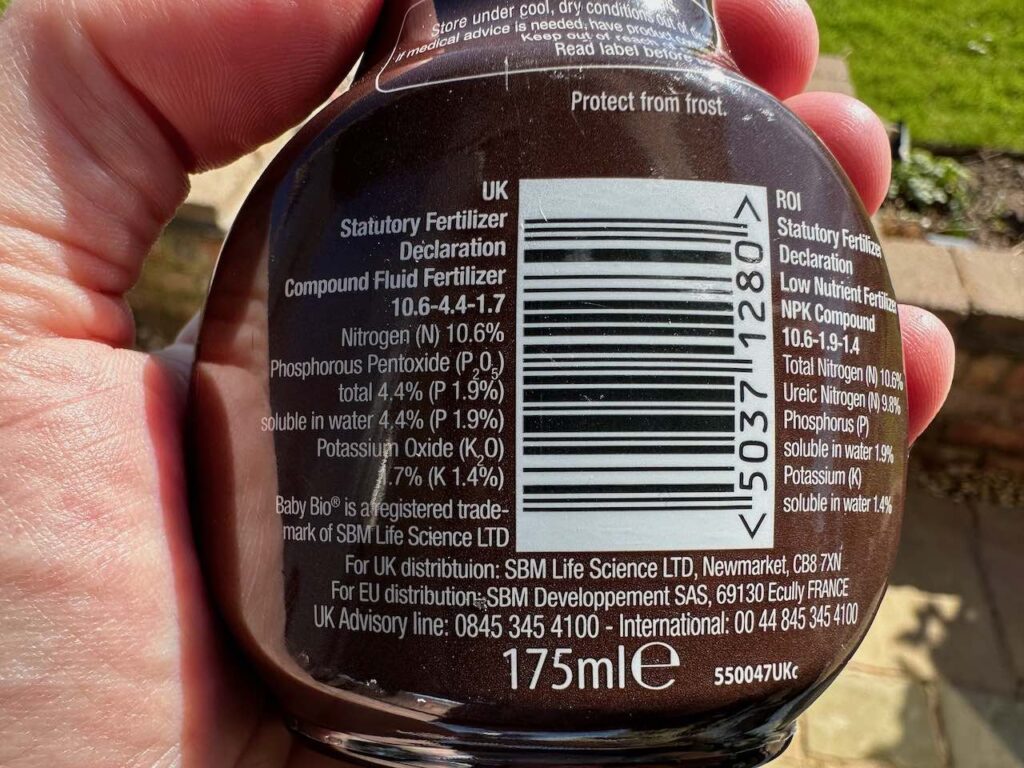
Each of these nutrients has a specific function in plant growth and development.
Gardeners also use the mnemonic for NPK:
'Shoots, roots and fruits'
To remember which nutrients apply to which part plant. Nitrogen for shoots (leafy growth, phosphorous for roots and potassium for fruits. There is a bit of crossover between the last two, but that's the easiest way to remember what each nutrient does in plant food.
It's also helpful to understand that potassium is sometimes referred to as potash in plant feeds too.
Choosing a fertilizer with the appropriate NPK ratio for your plants' needs is important. For example, plants grown primarily for their foliage, such as lettuce or spinach, require a fertilizer with a higher nitrogen content. On the other hand, plants grown for their flowers or fruit, such as roses or tomatoes, require a fertilizer with a higher phosphorus and potassium content.
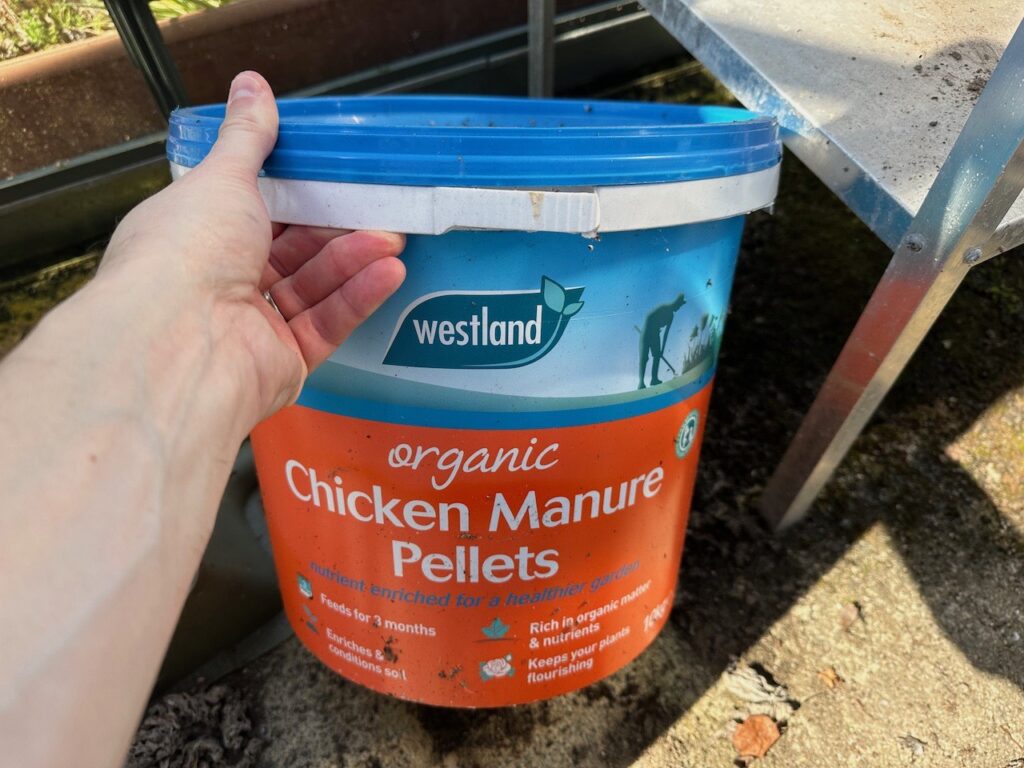
It's important to note that while NPK is important, plants also require other nutrients and micronutrients to thrive. Therefore, choosing a well-balanced fertilizer that contains all the nutrients your plants need is essential.
Did you know that you can take my course and learn how to become a Garden Ninja yourself? Click here for details
Micro plant nutrients, also known as micronutrients or trace elements, are essential nutrients that are required in smaller amounts by plants for their proper growth and development. While macro nutrients such as nitrogen (N), phosphorus (P), and potassium (K) are needed in larger quantities, micronutrients are equally important for plant health, even though they are needed in smaller amounts. The most commonly recognized micronutrients for plant growth are:
Iron is important for photosynthesis and plays a role in the production of chlorophyll, which is essential for the plant's ability to capture light energy and convert it into usable energy. Iron also plays a role in enzyme activity and other metabolic processes in plants.
Manganese is involved in various metabolic processes, including photosynthesis, respiration, and nitrogen metabolism. It also helps in the formation of enzymes and plays a role in the activation of certain enzymes.
Zinc is involved in many enzymatic reactions in plants and plays a role in the production of growth hormones. It is also important for pollen formation and seed development.
Copper is important for several physiological processes in plants, including photosynthesis, respiration, and lignin synthesis. It is also involved in the formation of enzymes and plays a role in plant reproductive processes.
Boron is essential for cell division, cell elongation, and membrane integrity in plants. It also plays a role in the metabolism of sugars and other carbohydrates.
Molybdenum is involved in nitrogen metabolism in plants, including the conversion of nitrate to ammonia, which is an essential step in the process of nitrogen assimilation.
Chlorine is involved in photosynthesis, osmoregulation, and ionic balance in plants. It is also required for the synthesis of certain enzymes and proteins.
These micronutrients are required in small quantities, but their deficiency can lead to various nutrient-related disorders and reduced plant growth and yield. It is vital to ensure that plants have access to adequate levels of micronutrients through balanced fertilization or supplementation, based on soil and plant tissue analysis, to maintain optimal plant health and productivity.
However, for the most part, using a balanced organic plant food like peat compost ensures that all these micronutrients will be adequately present for your plants.
I only ever add these micronutrients if a plant is sick or needs treatment for a very specific cause.
Now that we understand what NPK (Nitrogen, phosphorous and potassium) means (remembered as shoots, roots and fruits), we can quickly work out what plant food our vegetables need. Vegetables have a high requirement for potassium, given they fruit or produce edibles. So, therefore, a high potassium or potash food is required.
I use three different types of plant food for my allotment and vegetable patches:
These all contain a good balance of NPK but have higher potassium levels for fruiting. So they are great all-rounders. Tomato liquid feed is also good, but I prefer these organic fertilizers when growing my own produce to eat. The above plant foods help feed vegetables throughout the season resulting in bumper crops. None of them are synthetic (thus reducing the carbon required to make them), and all break down back into the soil. Creating as minimal a carbon footprint as possible.
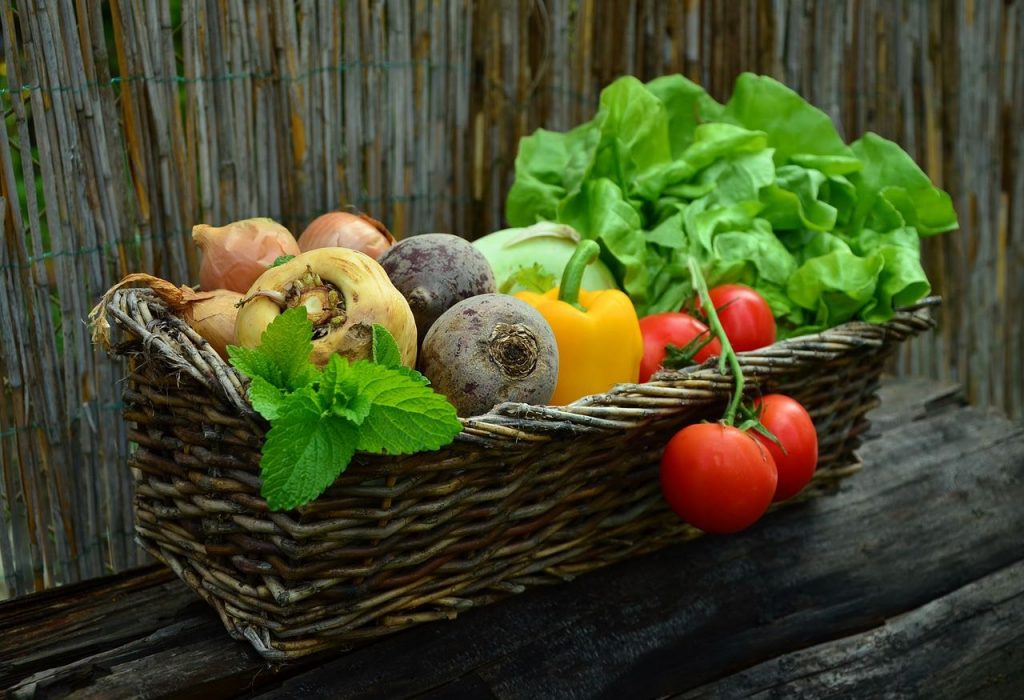
The best time to feed your garden plants and vegetables is when they are actively growing and about to fruit. There's no point feeding plants in the winter when they are dormant. It's a waste of fertilizer, and it squanders resources in the garden.
I feed plants from April through to July here in my garden. But I only feed plants when they need it. Most of my herbaceous perennials get no food whatsoever. That's because, with a yearly compost mulch, they don't need anything else.
For fruit, vegetables, and highly demanding flowers like roses, I start to feed them in April when they are actively growing.
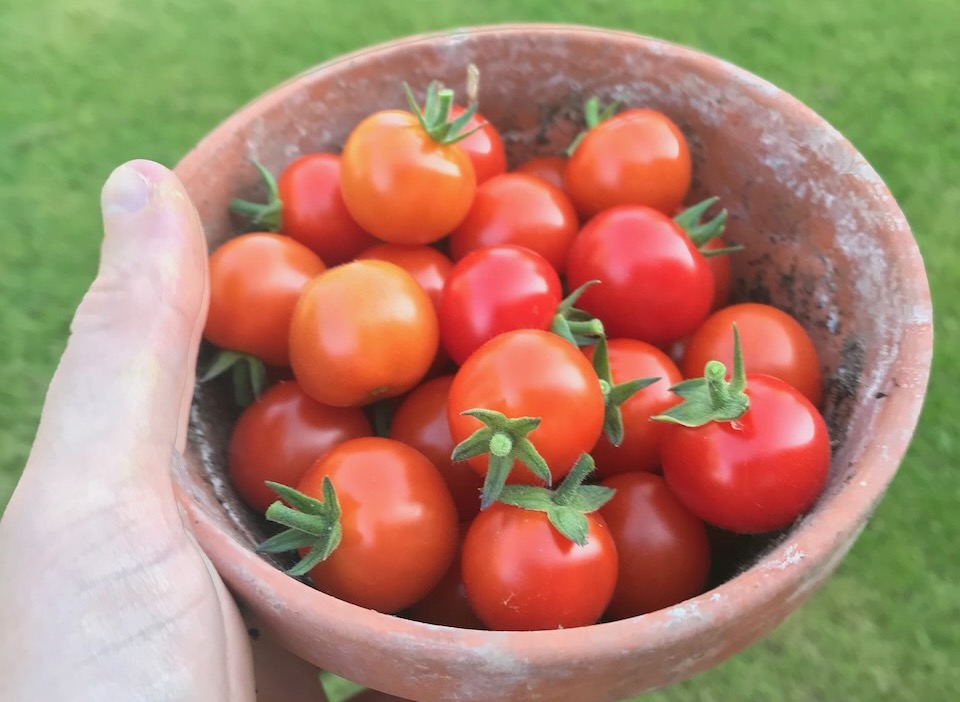
For vegetables that are fruiting, like tomatoes or squashes, I give a high potassium feed, like my homemade comfrey tea. For root vegetables, I apply homemade compost or chicken manure.
The quick answer is yes, organic plant food is always preferable to synthetic or mass-produced chemical fertilizers.
The reasons that organic plant foods are better for our gardens:
The best way to make your own plant feed is by making your own homemade compost or comfrey tea.
Compost is probably one of the easiest plant feeds to make and has the lowest cost. If you want to know how to make your own compost check out this article with all the details and watch my video below on how to easily make your own compost bins for hot composting.
Composting is a natural process that involves the decomposition of organic materials into nutrient-rich humus, which can be used as a valuable soil amendment for gardening and, best of all it's free!
Composting is a sustainable and environmentally friendly way to recycle organic waste and create nutrient-rich compost for your garden. By following these basic steps and managing your compost pile properly, you can create your own homemade compost and contribute to a healthy and sustainable gardening practice. Becoming a true Garden Ninja!
Yes, you can! Sometimes over feeding a plant can be worse than not feeding the plant at all. That phrase of killing them with kindness certainly does apply to plants. Plants will only grow at a certain rate so overfeeding them will not speed this up or make them flower earlier. We need to be mindful of not always trying to rush Mother Nature. Plant food is a supplement to get the best out of our plants, not a shortcut.
Overfeeding plants, whether with synthetic or organic fertilizers, can cause a variety of symptoms that indicate nutrient imbalances or toxicity in the plant. Here are some common symptoms of overfed plants.
Overfeeding plants can result in leaf burn or scorch, where the edges or tips of the leaves turn brown or yellow and may become dry and crispy. This can occur when excessive salts or nutrients accumulate in the soil, leading to osmotic stress and damage to the plant's cells.
Overfeeding can cause leaf distortion or curling, which can be indicative of nutrient imbalances or toxicity. For example, excessive phosphorus can cause leaf distortion or curling, while excessive manganese or zinc can cause similar symptoms.
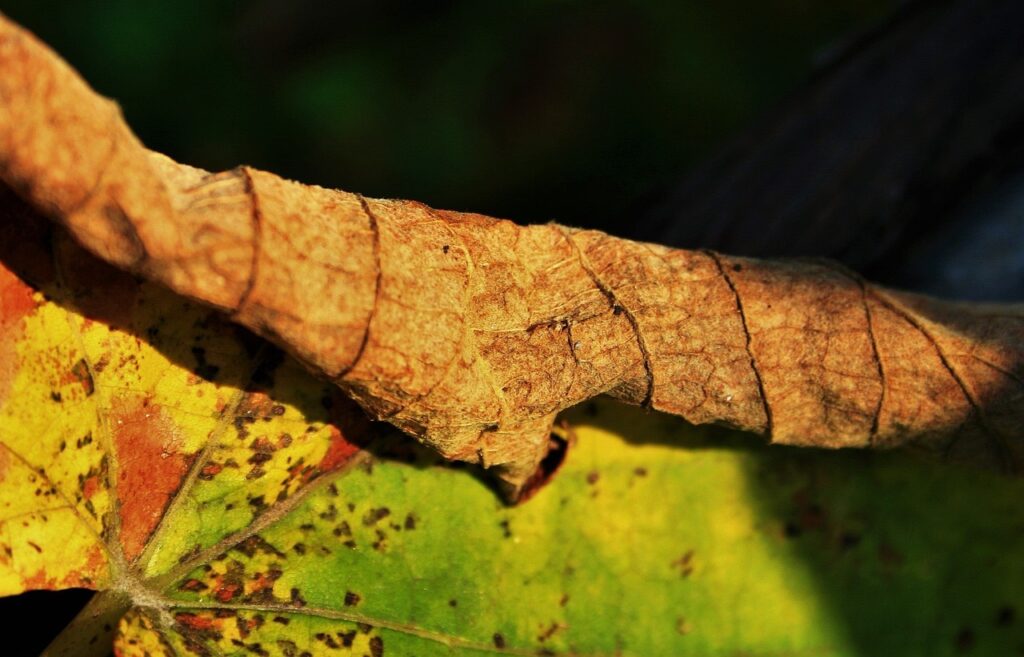
Overfeeding can negatively impact plant growth, causing reduced growth or stunted growth. This can occur when excessive nutrients inhibit the plant's ability to take up water and nutrients properly, leading to impaired growth and development.
Over time, overfeeding can result in the accumulation of salts on the soil surface. This can be observed as white or yellowish crusts on the top of the soil or around the plant's base. Salt accumulation can disrupt soil structure, reduce water penetration, and affect plant root health.
Overfeeding can affect the flowering and fruiting of plants. Excessive nitrogen, for example, can promote lush foliage growth at the expense of flowering or fruiting. Additionally, nutrient imbalances caused by overfeeding can result in poor fruit quality, abnormal fruit shape or colour, or reduced fruit production.
If you're looking at buying synthetic plant feeds it's essential to understand how they are made. This will help inform you as to whether or not you agree with the high carbon footprint and energy usage needed to make these synthetic chemicals on a mass-produced scale.
With mass-produced fertilizer, the 3 main nutrients for plants, NPK are chemically synthesised from a few key materials on an industrial scale in factories worldwide.
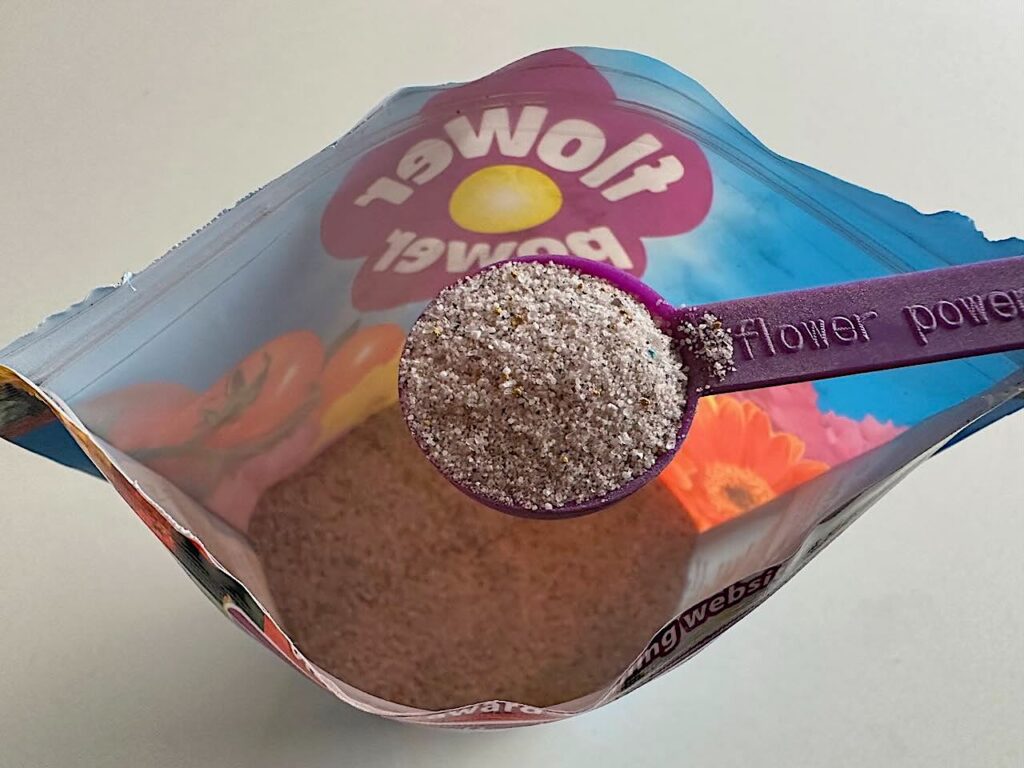
Chemical processing methods are used to convert the raw materials into forms that are more readily available for plant uptake. So, let's take a look at how NPK are created for this purpose.
Can be obtained from ammonia (NH3) or urea (CO(NH2)2). The most common form is by using the Haber-Bosch Process. It involves reacting nitrogen gas (N2) from the atmosphere with hydrogen gas (H2) to produce ammonia (NH3), which is then used as the basis for many nitrogen fertilizers.
The process is carried out at high temperatures (400-500°C) and high pressure (150-300 atmospheres) using iron or iron-based catalysts. This is the main plant food for agriculture and farming.
Can be derived from phosphate rock. This is a sedimentary rock containing high concentrations of phosphate minerals which is mined from phosphate deposits using large equipment. Sometimes it's used to produce phosphoric acid, which is a key ingredient in many phosphorus fertilizers.
Phosphoric acid can be produced through several methods, including wet process and thermal process.
The wet process involves reacting phosphate rock with sulfuric acid to produce phosphoric acid, while the thermal process involves smelting phosphate rock with coke or other carbon sources to produce phosphorus pentoxide, which is then converted to phosphoric acid.
Can be obtained from potassium chloride (KCl) or potassium sulfate (K2SO4).
These raw materials may undergo chemical reactions, such as neutralization, hydrolysis, or other processes, to transform them into the desired nutrient forms.
Though again it must be stressed that a home made compost of plant tea like Comfrey can provide all of these without the need for intensive manufacturing processes. As an ethical gardener, I avoid synthetic chemical fertilizers wherever possible.
Plant feeds, also known as fertilizers, are typically made through a combination of natural or synthetic ingredients that provide essential nutrients to support plant growth and development. The specific process for making plant feeds can vary depending on the type of fertilizer being produced but generally involves the following steps:
It's interesting when you compare the above with making your own homemade compost or comfrey tea. All of those steps above that you just don't need to worry about and all the energy saved in the process!
Plant feeds and fertilizers are an essential part of becoming a successful gardener. Applying them without knowledge can be a waste of money and resources. Further, it can ultimately harm your plants by applying them without care. By fully understanding the different plant feeds, from organic to inorganic, you can make better-informed choices about whether to feed your plants and what you're adding into the food chain.
Creating fertilizers is big business, and whilst there's a place for mass-produced plant food, I would always urge you to look closer to home for lower carbon options. By recycling our own garden and kitchen waste, we can help close the loop and provide plants with more natural food, all whilst feeding the soil.
Remember Ninjas that NPK is shoots, roots and fruits, so when choosing a fertilizer, you know exactly which one to pick based on your plants' needs.
Please Tweet, Facebook or Instagram me with your garden questions, pictures or comments. If you’re looking for more garden design tips, tricks and hacks, why not subscribe to my Youtube channel, where I’m happy to help!



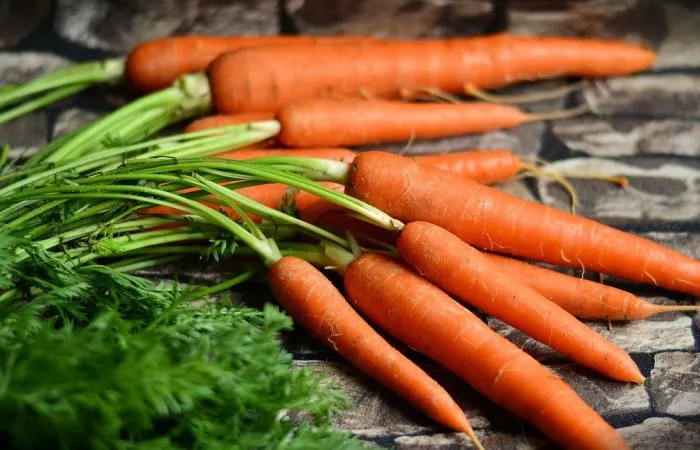
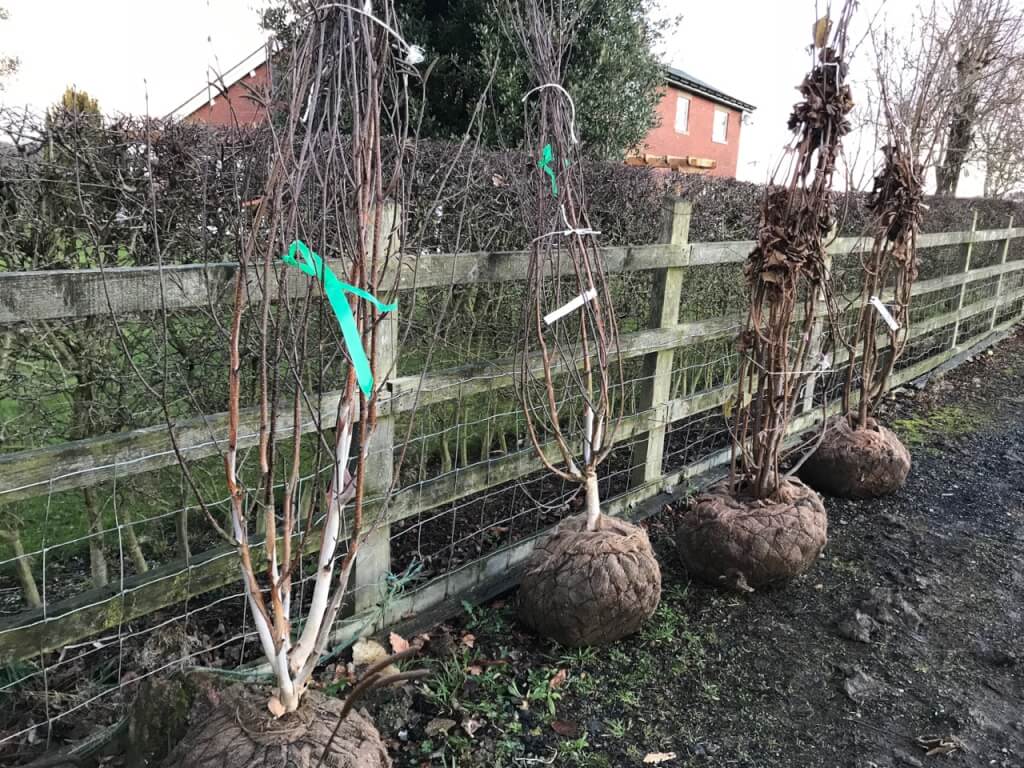
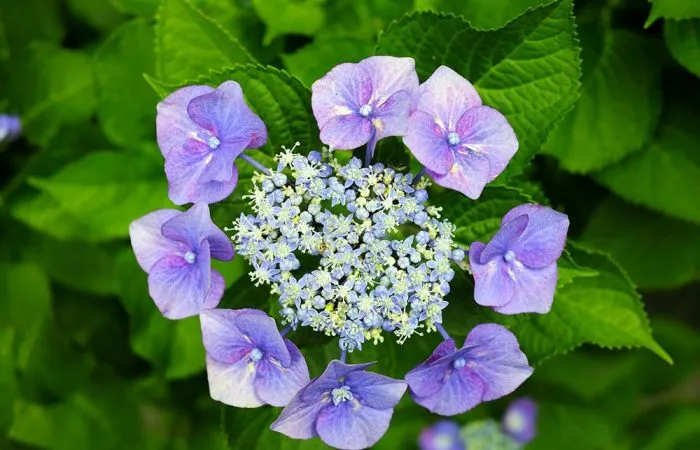
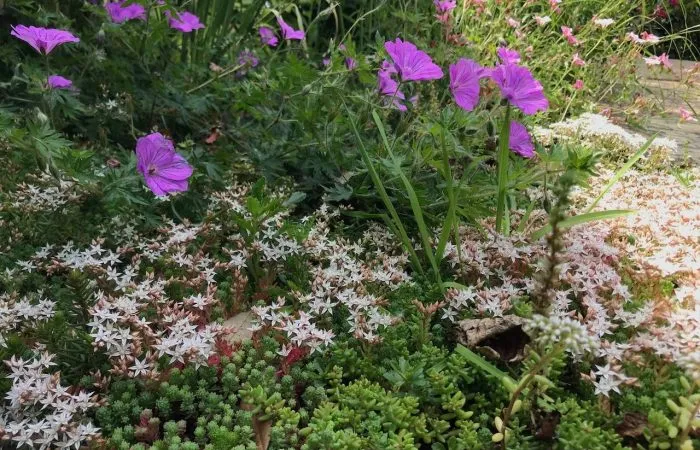
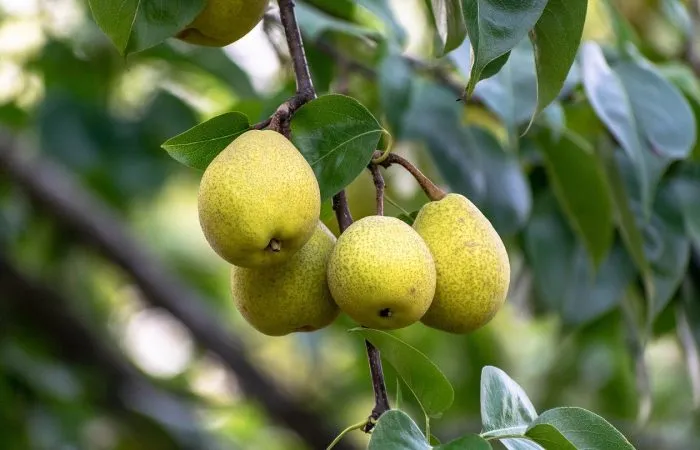


JOIN THE NINJAS
Join our Ninja community for extra guides & Discount Codes for Online Garden Courses!